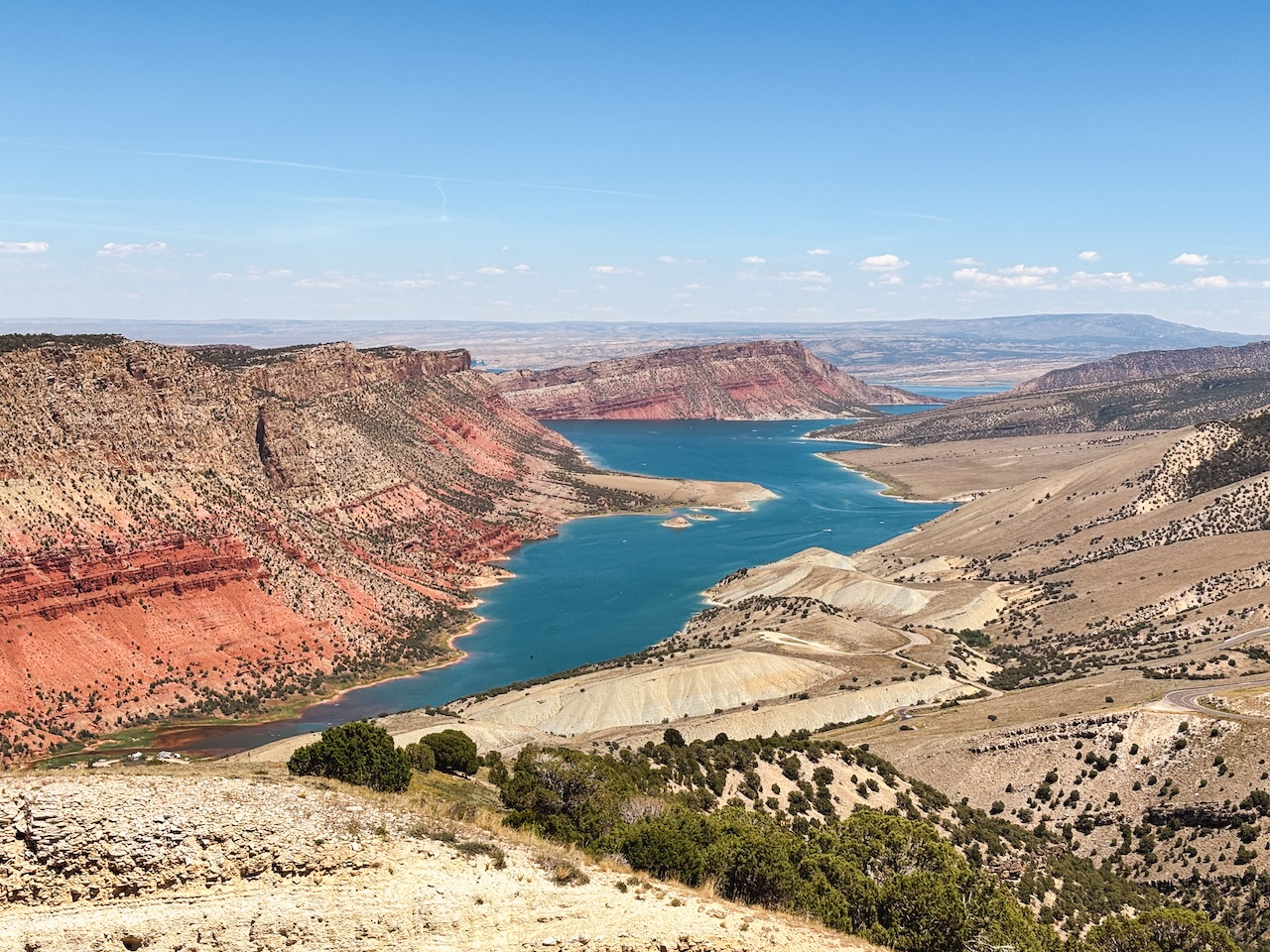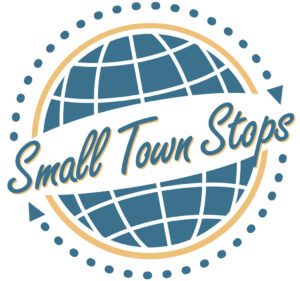
Is the Best Time to Visit Death Valley Really in the Summer?
While many of us avoid the heat and gripe about the increasingly hotter summers, some travelers seek it out. Reaching peak temperatures of 130°F, Death Valley is known as the hottest place on Earth. And yet, each summer, during the park’s hottest days, Death Valley sees the majority of its visitors who have come for some serious bragging rights. Wait, what? How can that be? Is the best time to visit Death Valley really in the summer?
Why do travelers flock to Death Valley during the hottest days on Earth?
Death Valley is the land of superlatives, creating many opportunities for notoriety. Spanning 3,422,024 acres or 5,347 square miles, Death Valley is approximately the size of Connecticut and the largest national park in the lower 48. Nearly 93% of the park is wilderness (3,182,482 acres), making Death Valley the largest federally designated wilderness in the lower 48 as well. It’s also home to the lowest point in America and markets itself as the driest and hottest national park in America. Visiting Death Valley in the summer comes with some serious bragging rights.
Bragging rights
For some, particularly international travelers, the more intense the heat, the more appealing the park becomes. I was shocked to hear this during my first-ever visit to Death Valley. My instinct is to avoid the heat, not seek it out, especially while on vacation. Officially recognized as the hottest place on Earth—holding the record of 134°F—the park sees summer temperatures that regularly soar above 120°F, and with nights not much cooler lingering in the triple digits. You’d think such scorching conditions would keep visitors away, yet paradoxically, summer is when Death Valley draws the most travelers. The question is: why?
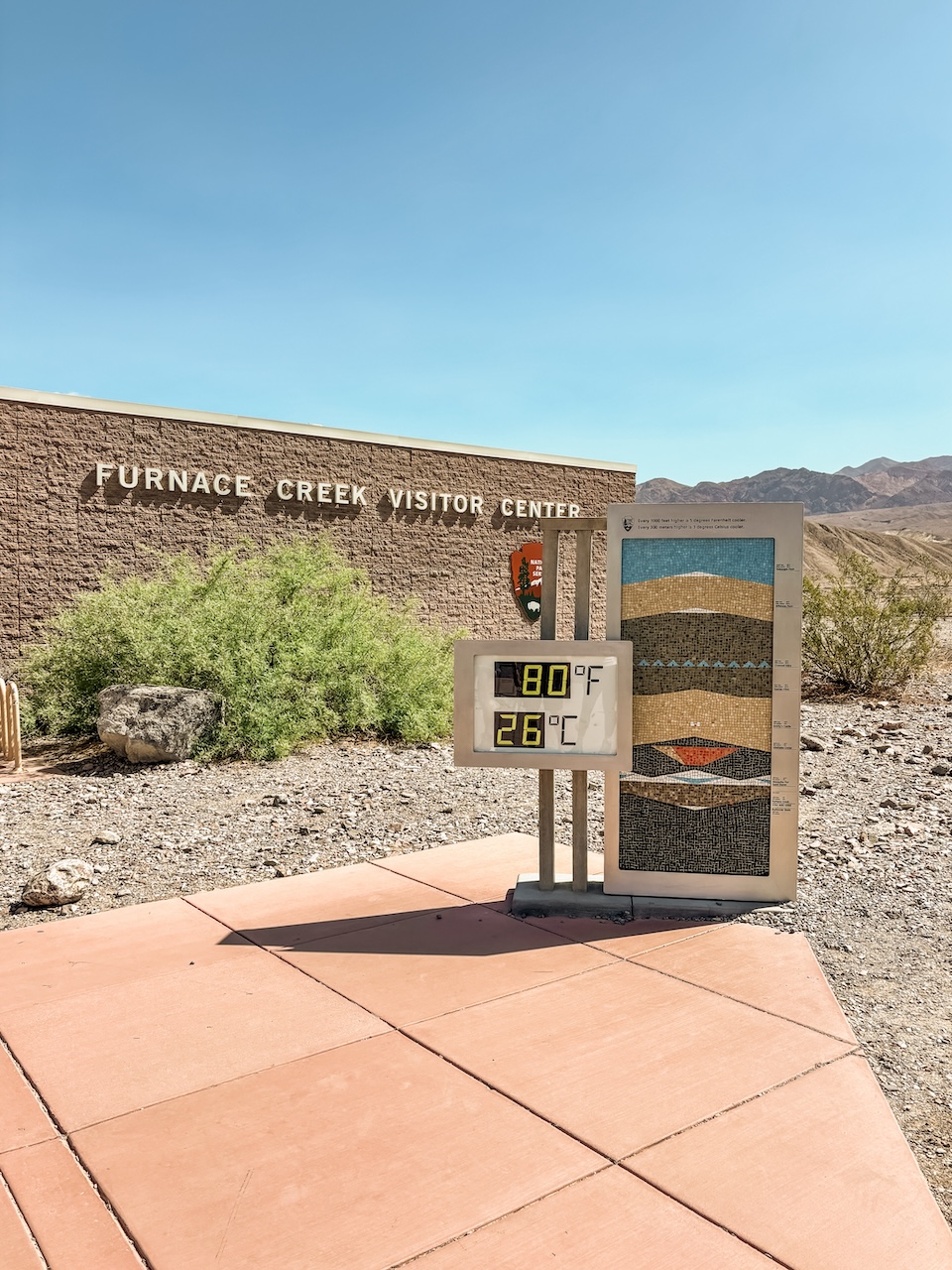
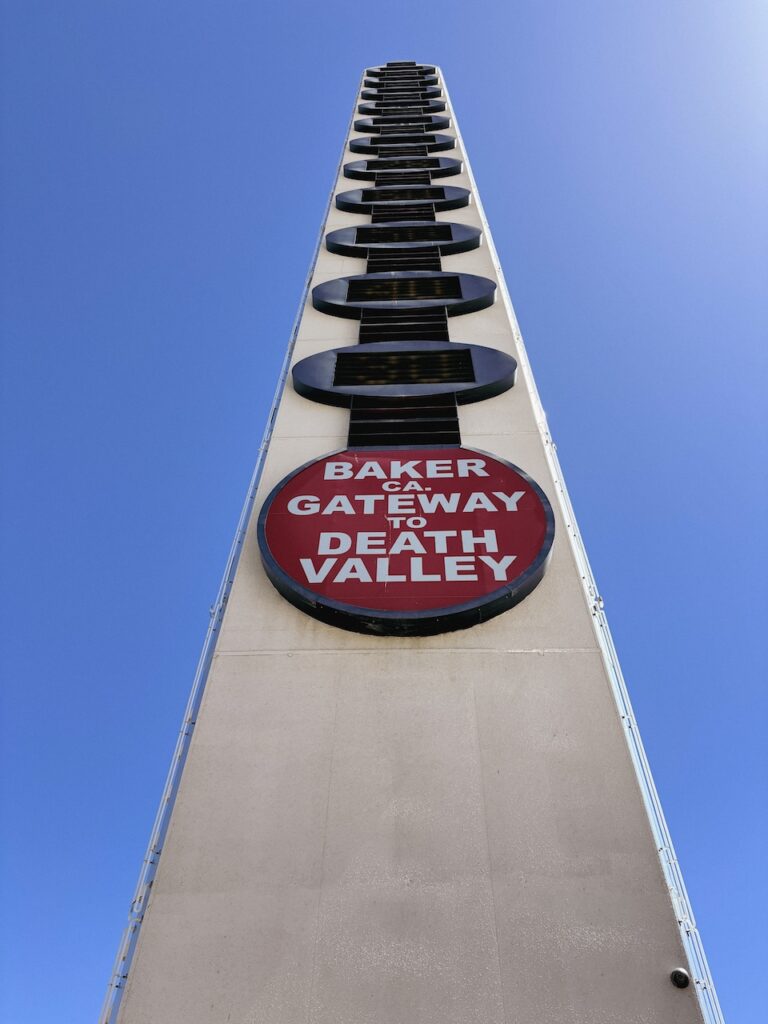
Most travelers come in the summer to stand next to the world’s tallest thermometer in the nearby town of Baker, California— “Gateway to Death Valley.” Snapping a photo beside it in triple-digit heat has become a badge of honor, as well as wearing t-shirts that say, “I beat the heat,” to show they survived the hottest place on Earth. Visitors also like to snag a photo in front of the iconic thermometer display at the Furnace Creek Visitor Center inside the park.
Experience the land of extremes
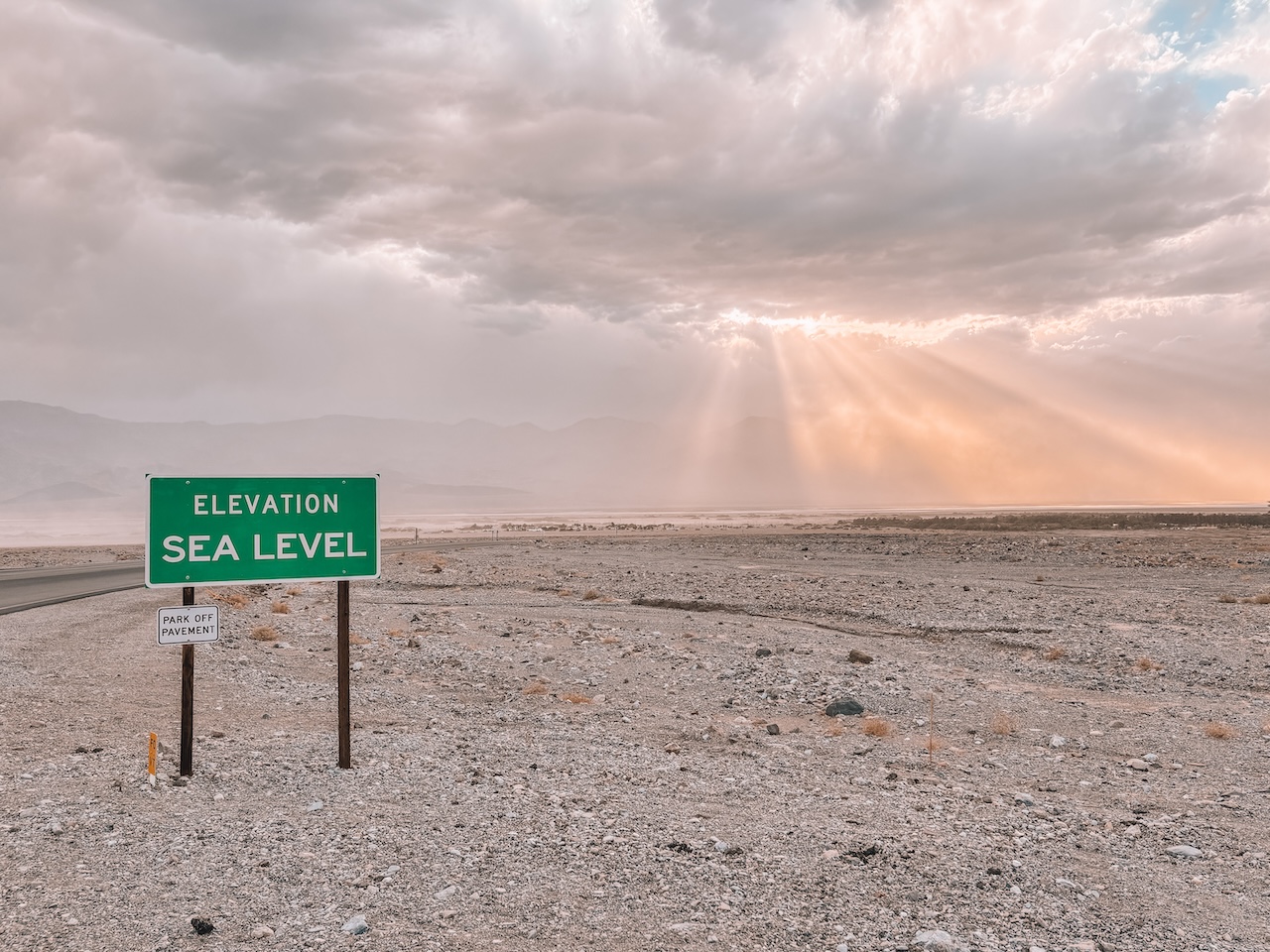
Known as the hottest place on earth, the lowest point in America, and the driest place in the country, Death Valley feels like the land of extremes. People spend thousands of dollars and train for months to climb the world’s highest mountains, and some even risk the inevitable stomach aches to eat the world’s largest 1,774-pound hamburger, and we want to post it all on Instagram. So, it doesn’t surprise me that travelers seek out summer in Death Valley to experience the land of extremes.
During my visit, Death Valley lived up to its reputation as the land of extremes. On day one, driving into Death Valley was a humbling experience as we arrived on a blistering, windy day with temperatures dipping into the 100s. A relentless windstorm quickly turned into a sandstorm, clouding visibility along the roads and any sort of view we wanted to see. The whipping winds continued into the evening, preventing any chance of us getting out of our car to see the Mesquite Flat Sand Dunes or enjoying a sunset at Dante’s View. As soon as the wind left, a light rainstorm came, an experience I didn’t expect since they record less than two inches of rain a year. The next day revealed itself with a soft breeze, full sunshine, a cool 98°F, and plenty of puffy clouds. Death Valley’s landscape feels unforgiving. A place where life struggles to survive. So, who wouldn’t want to post a few photos of themselves on Instagram proving they survived summer in Death Valley?
Defying the odds
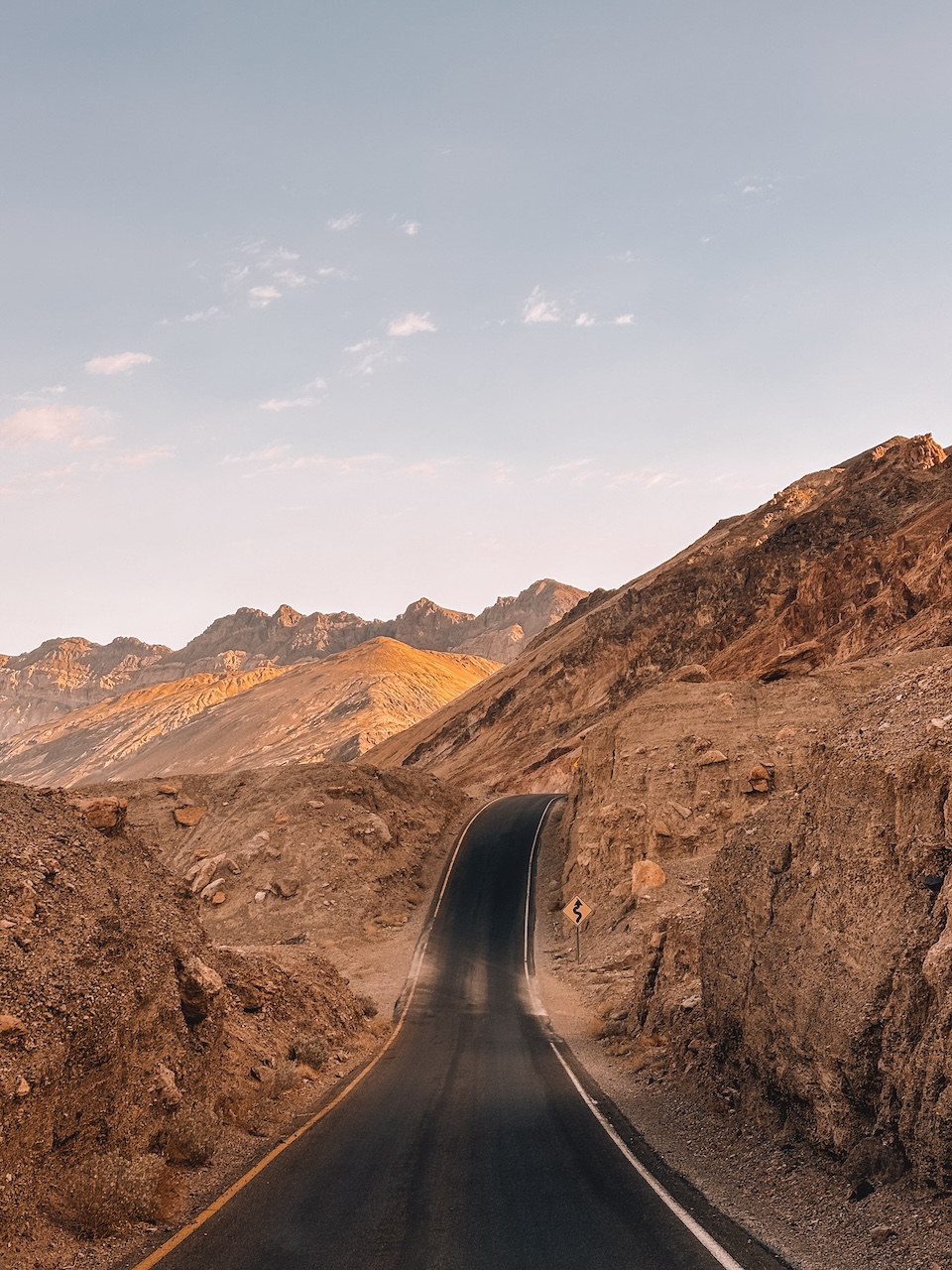
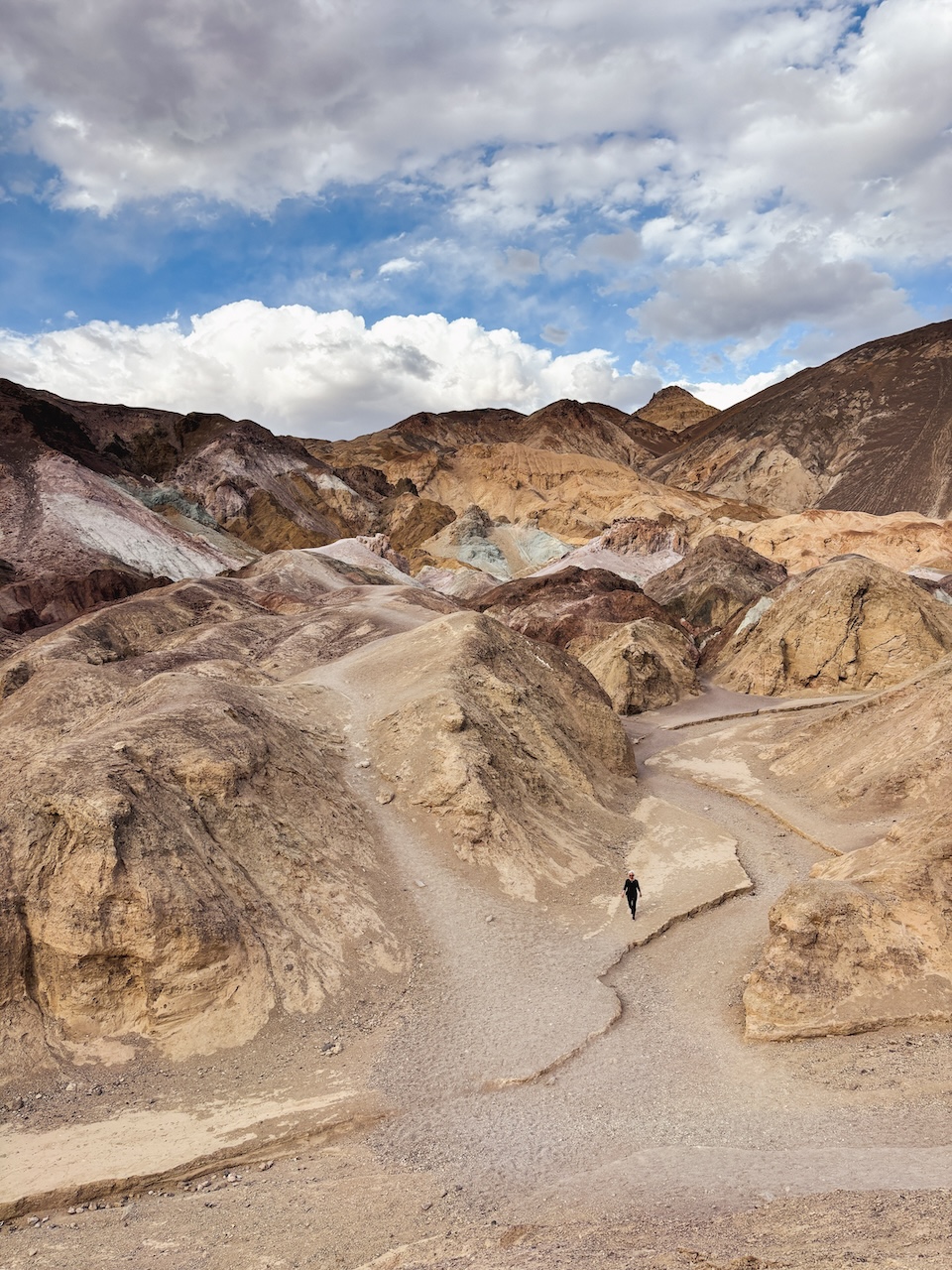
Visiting Death Valley feels like rooting for the underdog. Over the years, Death Valley has defied the odds of becoming a popular tourist attraction. Deserts were once rejected as a place for tourism, because beauty in nature was defined by stunning mountains, not the barren landscape of the desert. It wasn’t until the 1920s and 1930s that the stark beauty of desert landscapes came to be widely appreciated. And while the land was originally used for its mining capacity, it was the businessmen who mined the land who were the first to highlight Death Valley as a tourist attraction and promote it as a national park. Designated as a national park in 1994, it went from hell-hole to a land of mysticism and mysterious beauty. A sort of rags-to-riches story, Death Valley’s undeniable beauty is now sought out by travelers worldwide to experience its unique painted landscapes.
Things to do in Death Valley in summer
So, how do you embrace the summer’s heat in Death Valley? Limiting your time outdoors is key, especially during peak temperatures. It’s also about finding the right times to visit certain areas of the park.
Visiting the lowest place in North America
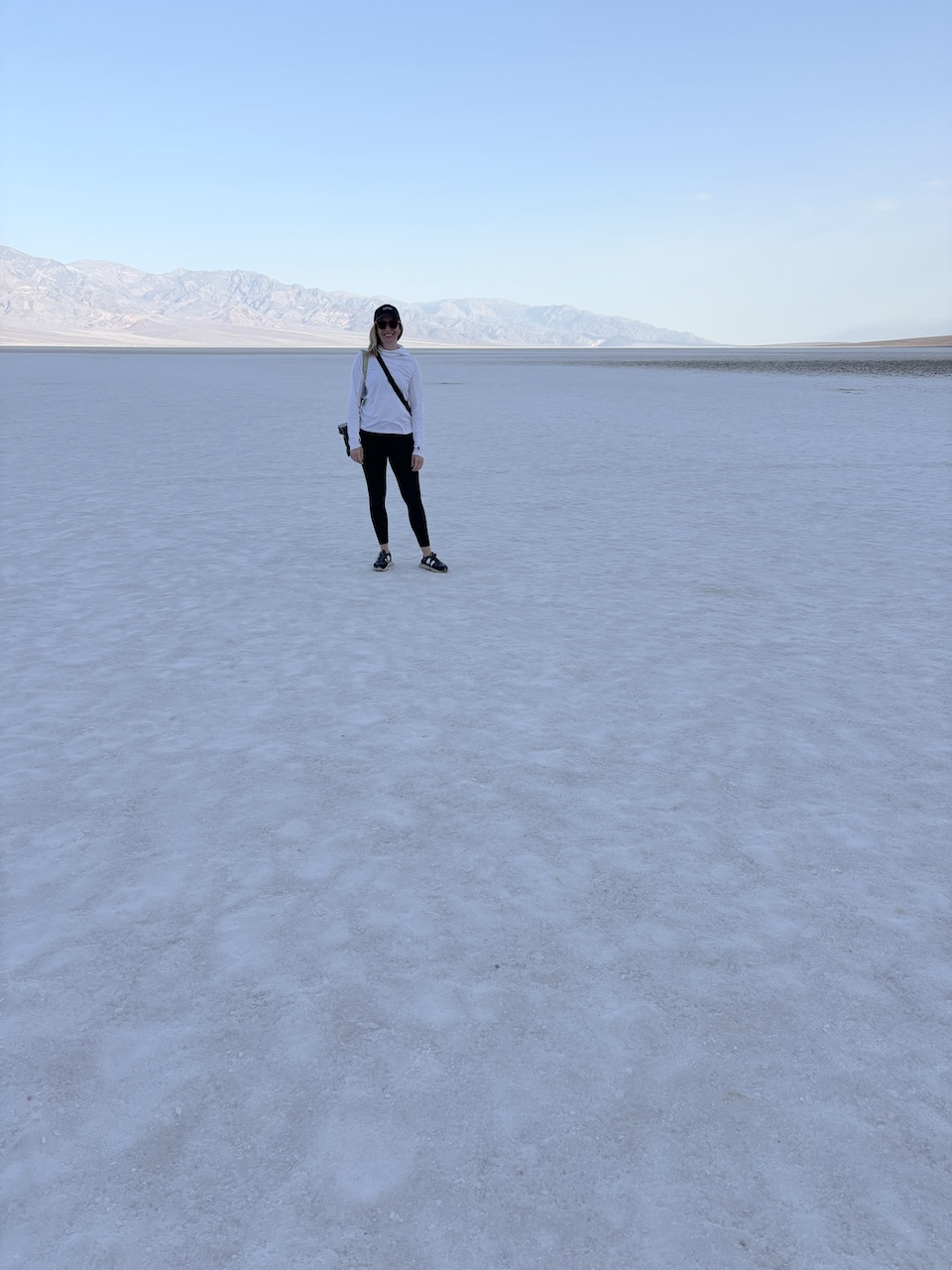
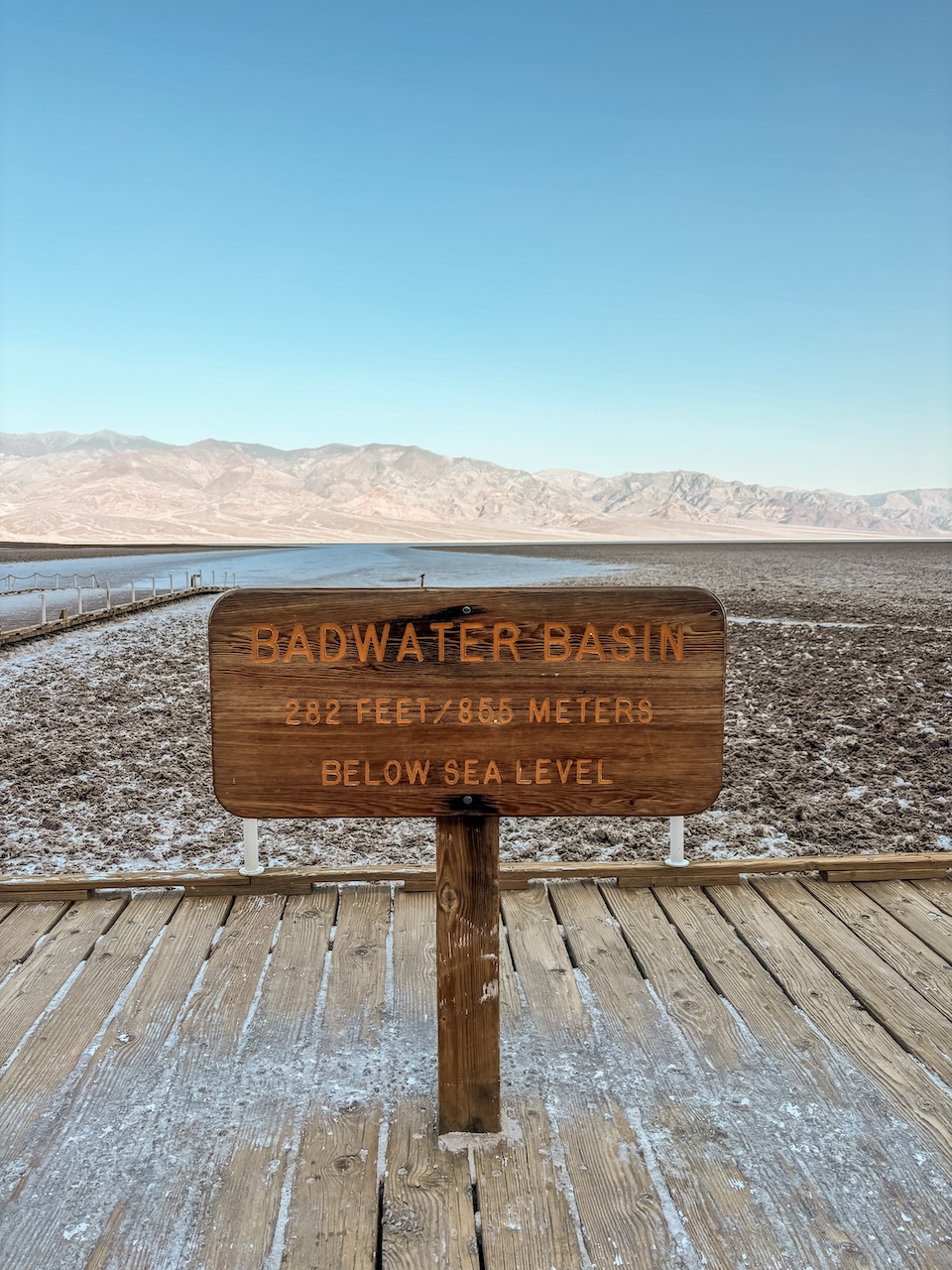
A great way to experience Death Valley’s extremes is with a visit to Badwater Basin. If you’re not a mountaineer and don’t desire to climb to the highest heights, visit the lowest place in North America at Badwater Basin for a different sort of bragging rights. Located in the heart of Death Valley, Badwater Basin sits at 282 feet below sea level.
The salt flats that cover nearly 200 square miles are what create this unique landscape. No extreme hikes are needed to get here, as it’s easy to drive to the landmark. Walking out onto the salt flats, you’ll see rippled salt mounds stretch into the distance. And soon the horizon meets with Telescope Peak, the highest peak in the park at 11,043 feet, staring back at you while you stand at the lowest place in the U.S.
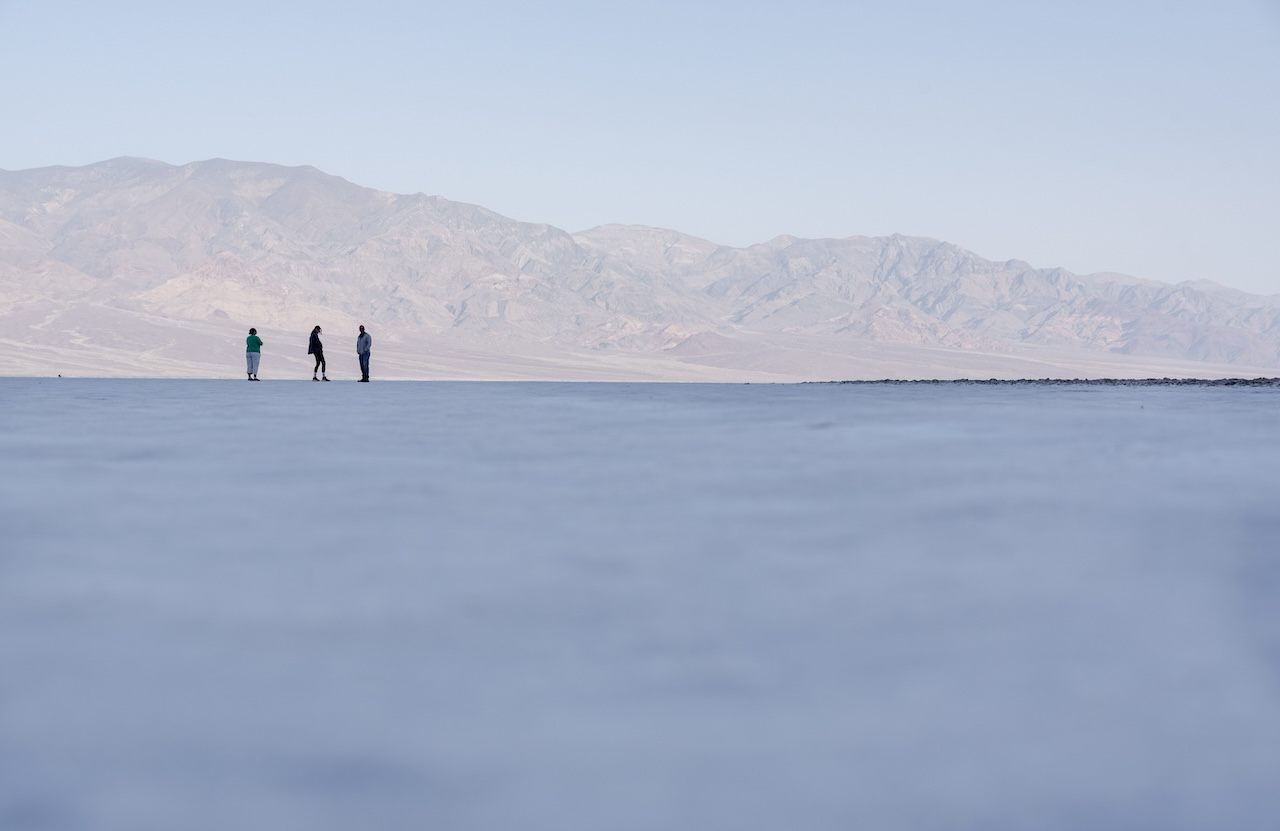
Tip: Visit Badwater Basin in the morning, before the sun rises over the basin. This will help keep shade on you most of the time.
Rising before the heat and cooling off at sunset
To avoid the extreme heat and see the colorful landscapes the park is known for, sunrise and sunset are the best times to witness the beauty of Death Valley. Even if your only goal is to experience the extreme heat of Death Valley, you can’t skip out on seeing when the park really shines.
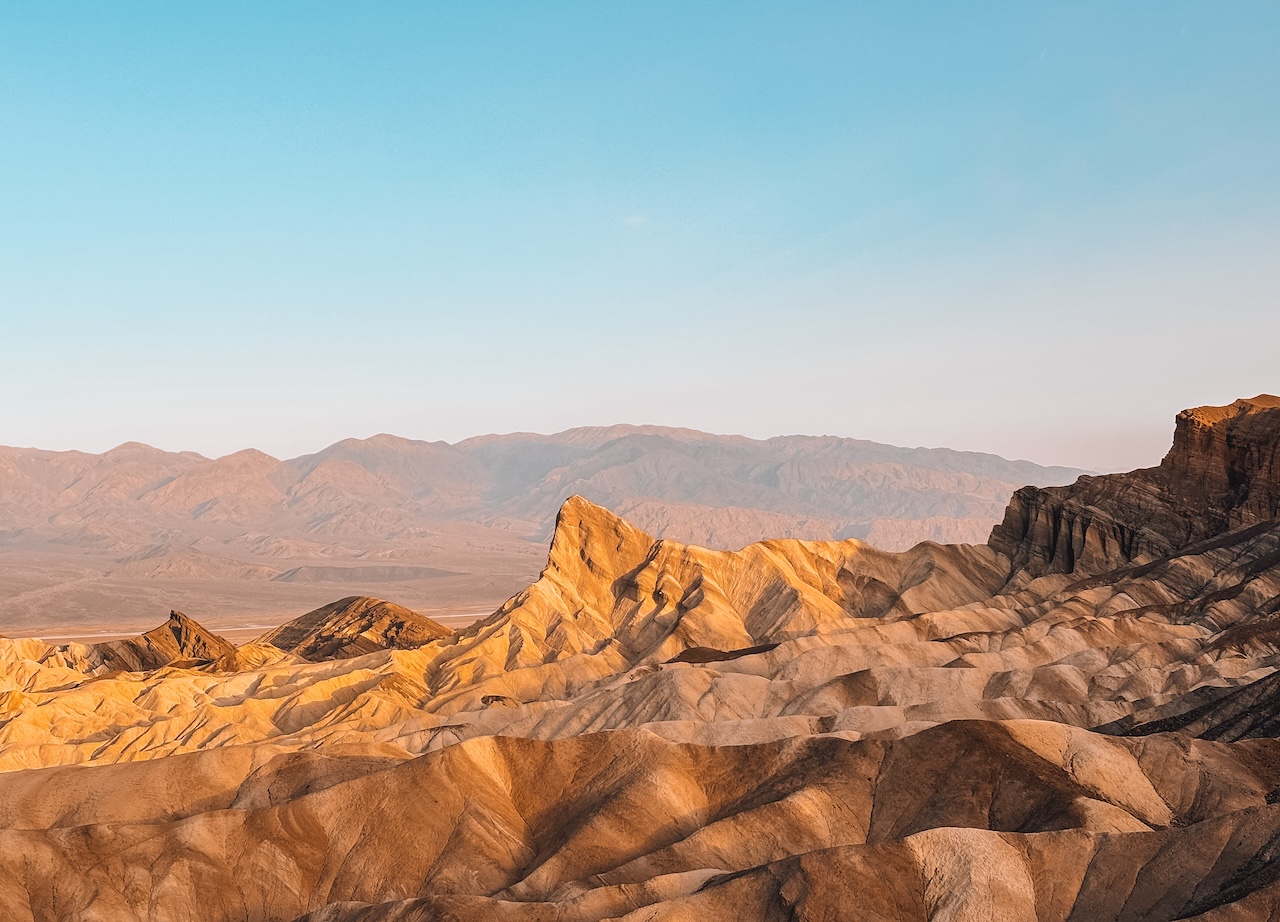
Start your day off with sunrise at Zabriskie’s Point. Sit and watch as the sun’s shifting light reveals row after row of golden badlands. A quick drive up to the parking lot and a short walk to the designated viewing area is all you need to peacefully enjoy a sunrise in Death Valley.
At sunset, Artist’s Palette is a Death Valley must-see. A drive through Artist’s Palette reveals a paint-pot of blue, green, purple, and red deposits of volcanic ash—a natural artist’s palette of color splashed across the slopes of Death Valley. Sunset is the best viewing time, or right after a rainfall, to see the full intensity of the colors.
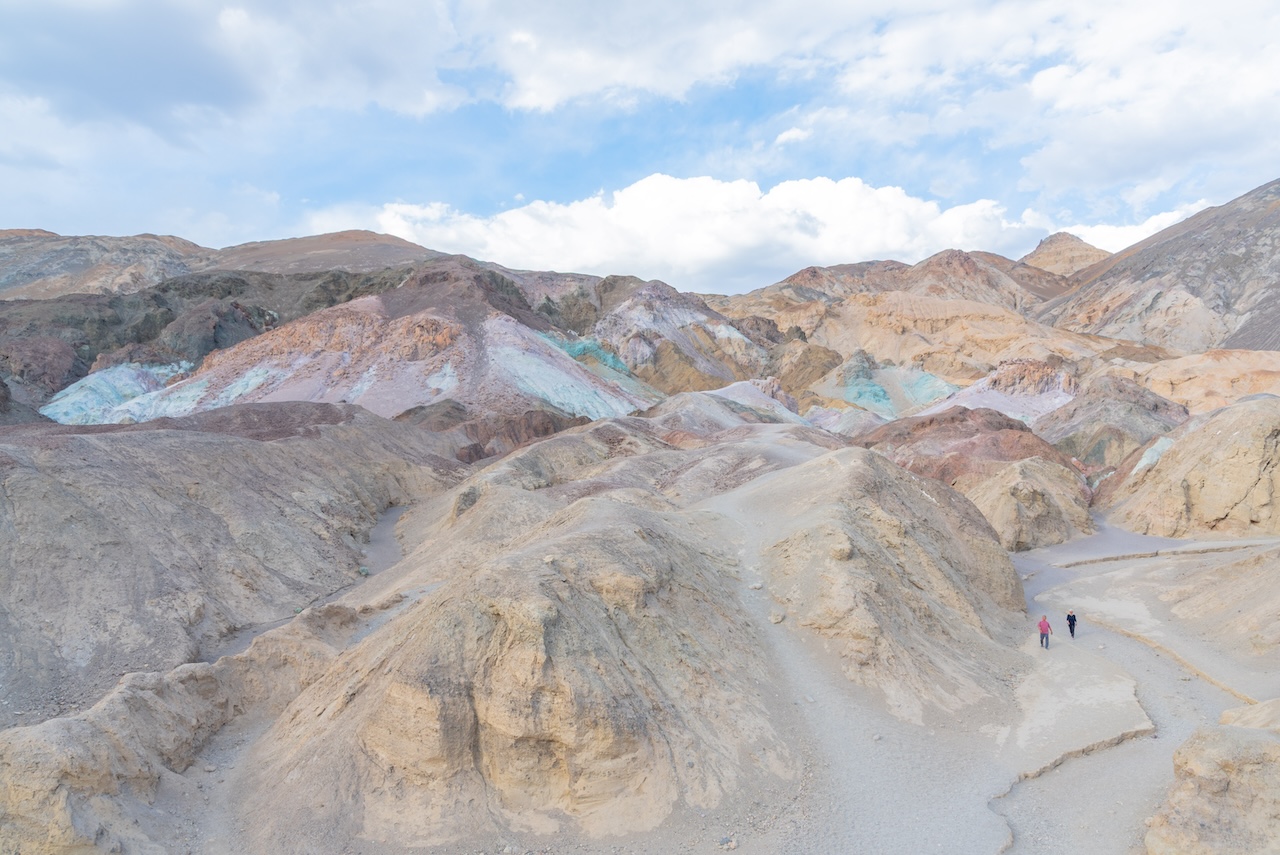
I would say any form of hiking in Death Valley during the summer is not an option. Signs are posted everywhere, “CAUTION: extreme heat danger.” When I spoke to the park ranger, her best advice was to limit your time outdoors to 10 minutes at a time, drink plenty of water, eat salty snacks, and stick to paved roads. Known also as the driest place on earth, as it has the lowest average annual rainfall of any place in the country (receiving less than two inches in a year), people can lose over two gallons of water per day just sitting in the shade.
Find your oasis in the desert with a stay at The Oasis at Death Valley
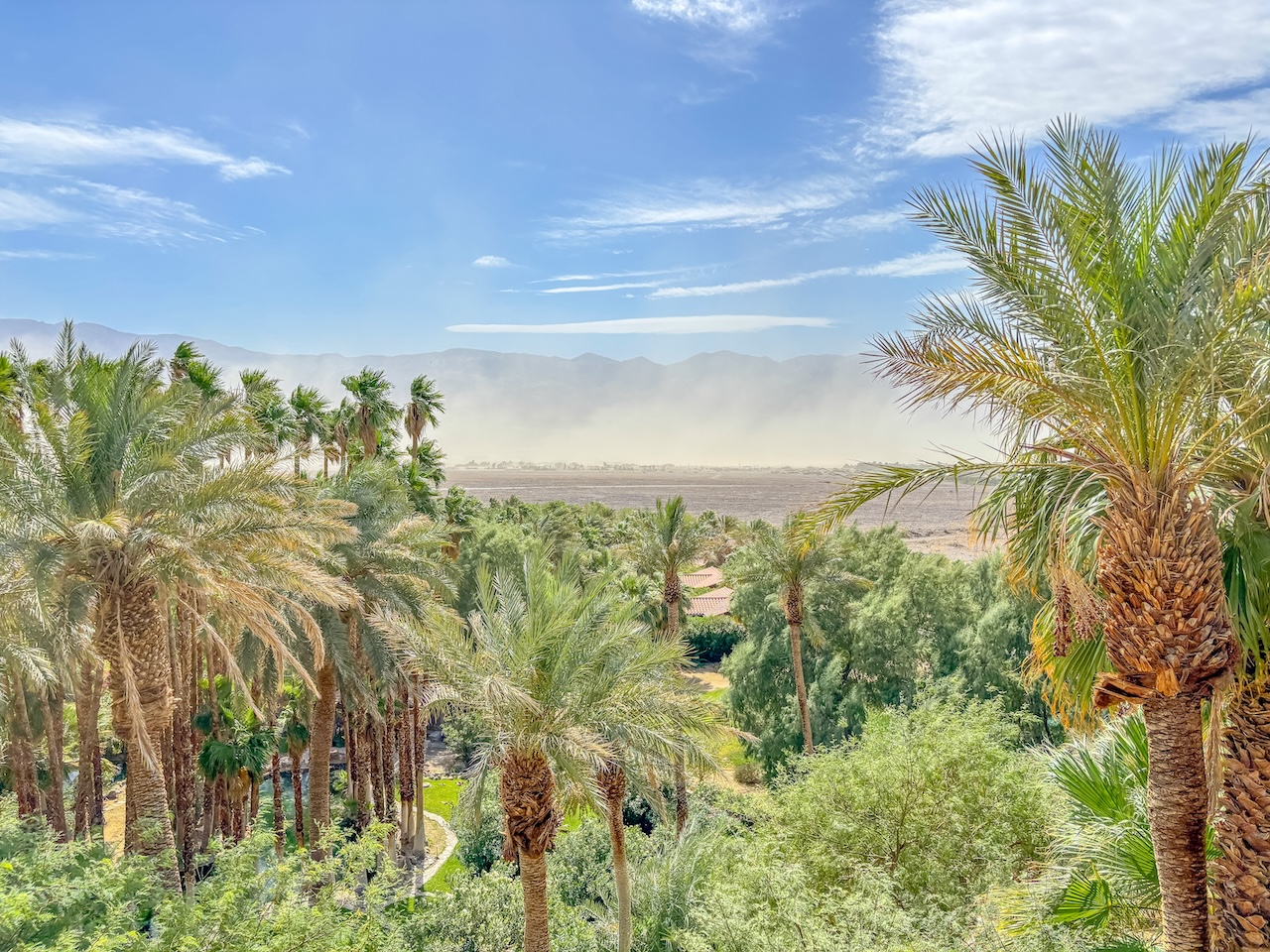
Finding your oasis in the desert is easy when you stay at The Oasis at Death Valley. The historic hotel, celebrating its 100th anniversary in 2027, is the only hotel option in the park or really anywhere nearby.
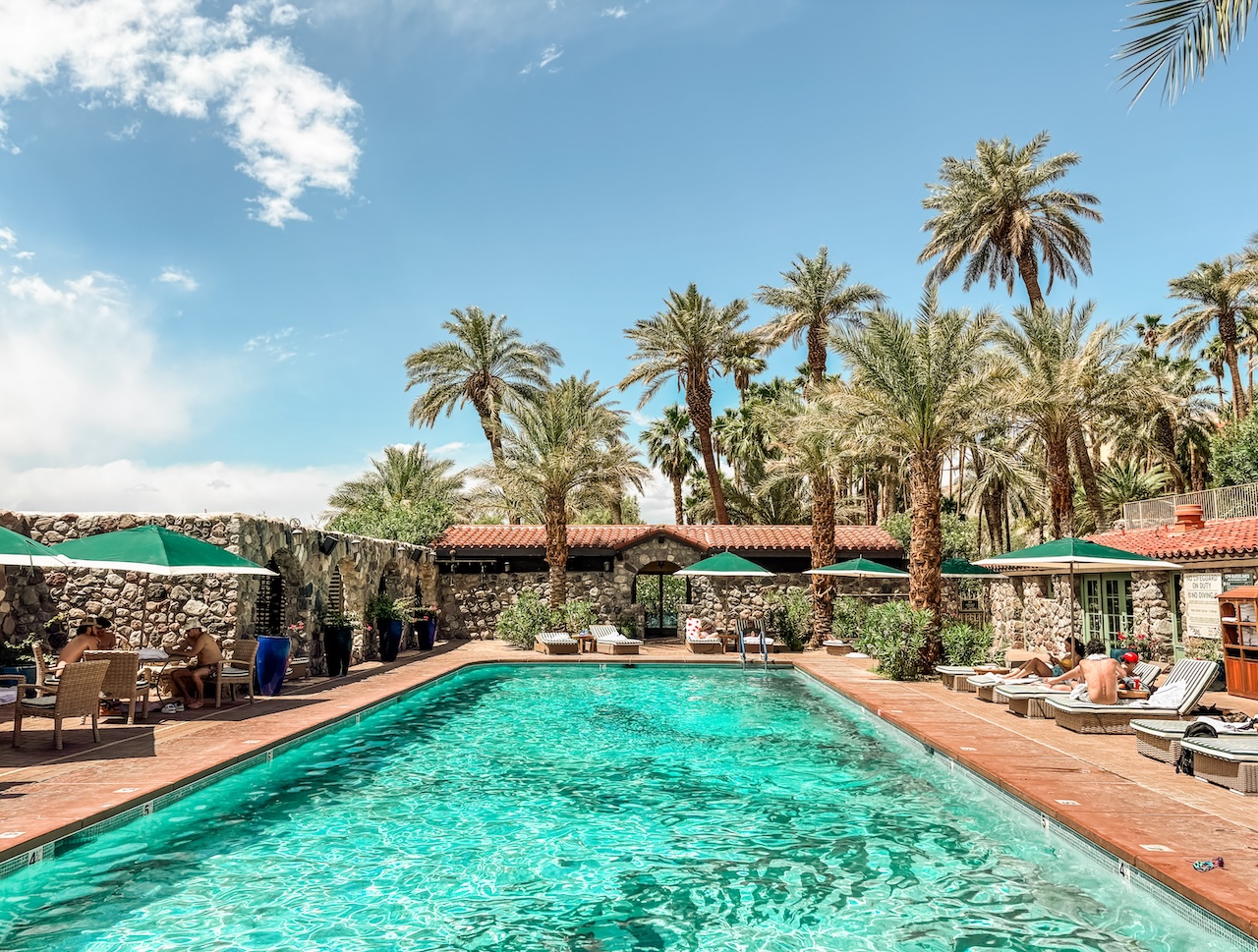
Shaded verandas, a relaxing pool, a lush garden with cooling shade from 100-year-old date palms, and air-conditioned rooms all offer plenty of opportunities to stay cool in Death Valley, no matter what time of day. The resort also highlights the area of extremes with the world’s lowest golf course, the Furnace Creek Golf Course, sitting at 214 feet below sea level. After a round, be sure to dine at the Inn’s restaurant, where the date bread—made from the original 1927 recipe—remains a must-order.
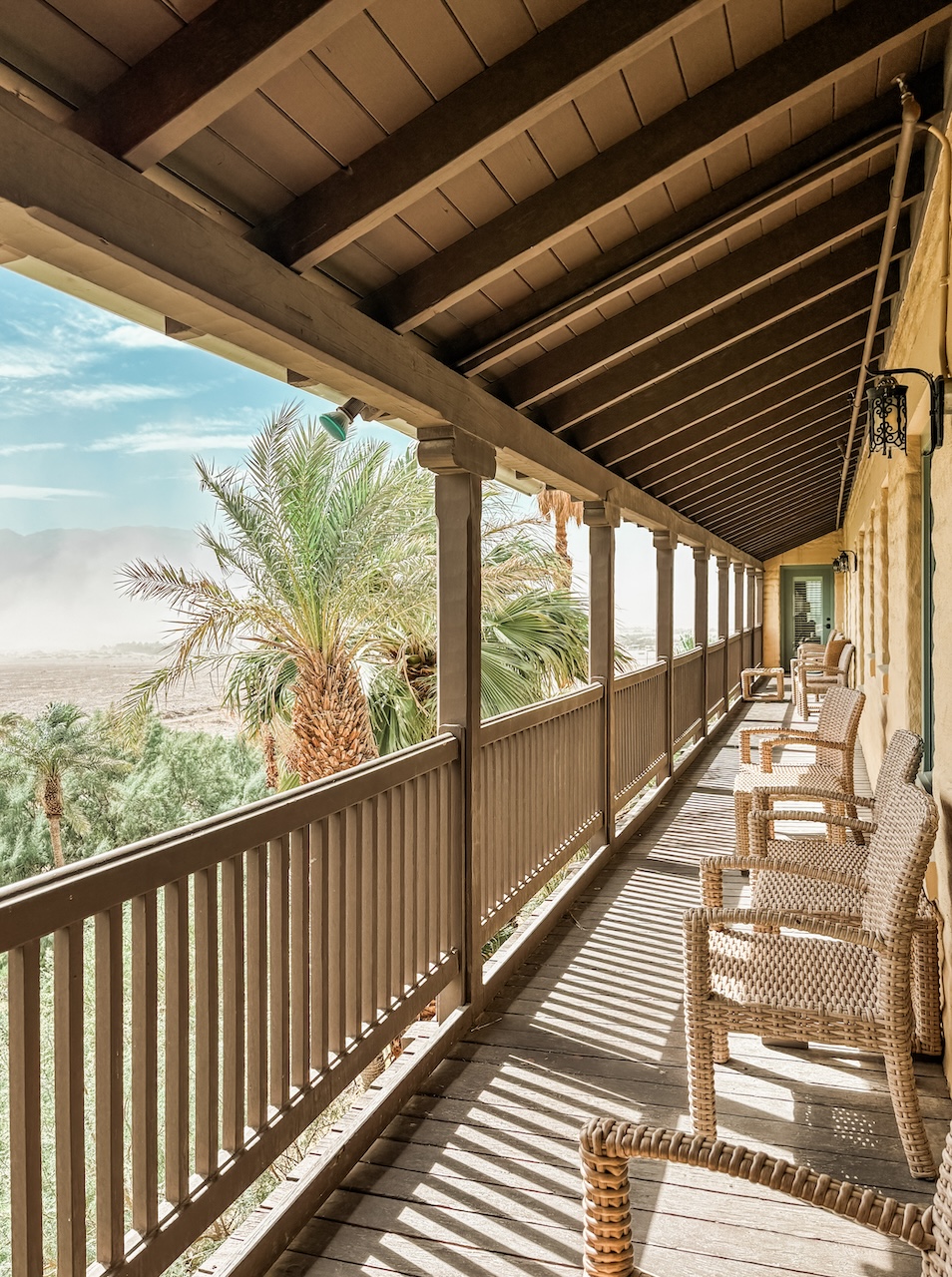
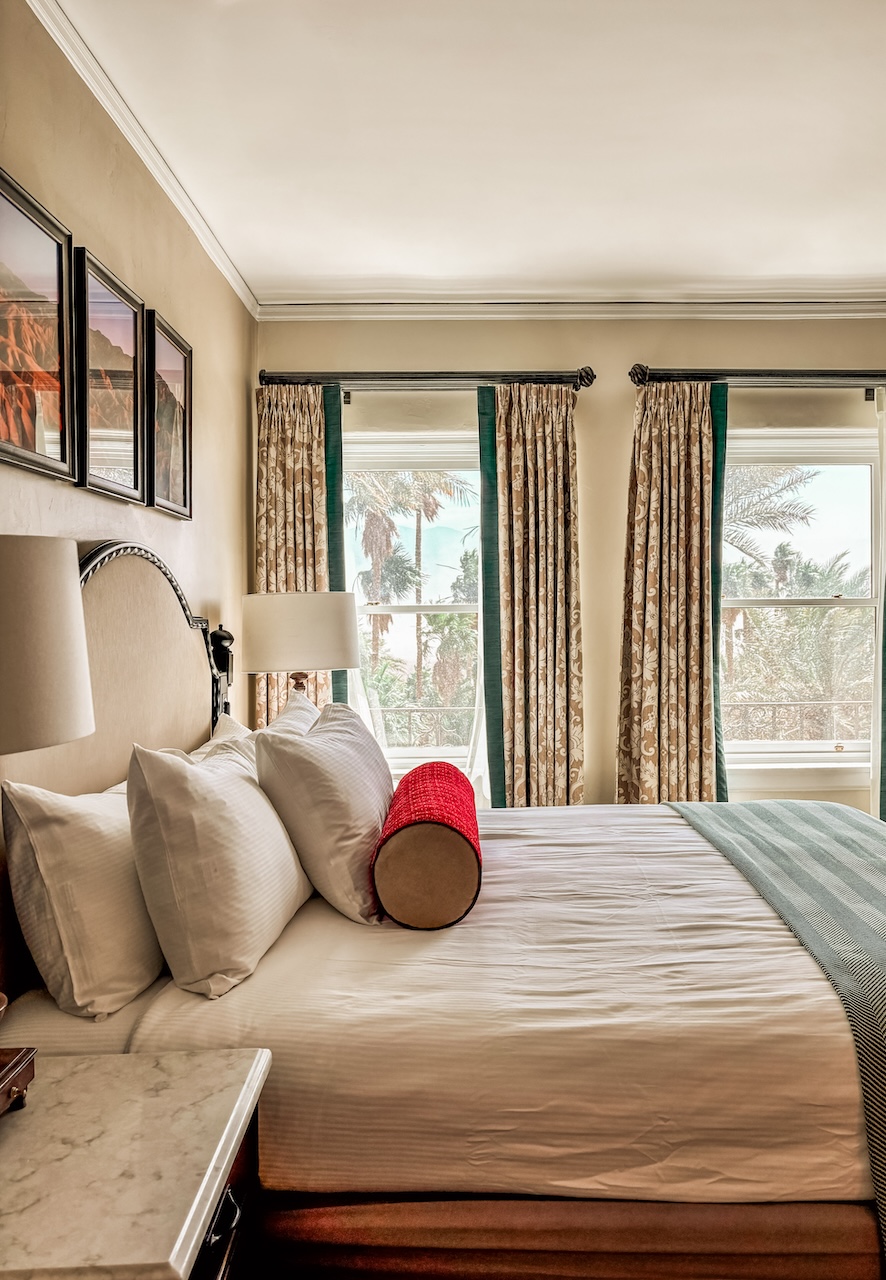
Death Valley’s Paradox
Death Valley’s paradox: What should repel people, instead attracts them. Its heat, once a warning, has become part of its mystique. Standing in the driest, lowest, hottest place in America is less about comfort and more about experience—an adventure at the very edge of survivability.
And that’s what keeps people coming. Death Valley offers not just landscapes of extremes, but the chance to step into a place where Earth itself seems pushed to its limits. It’s not the type of beauty defined by waterfalls or alpine peaks, but something rawer and more profound—a reminder of our planet’s wild, untamed power.
So if you find yourself in Death Valley on a 120-degree day, don’t be surprised to see other tourists, cameras in hand, grinning as they sweat. For them, and perhaps for you, it’s not just about enduring the heat—it’s about embracing one of the most extraordinary places on Earth.


